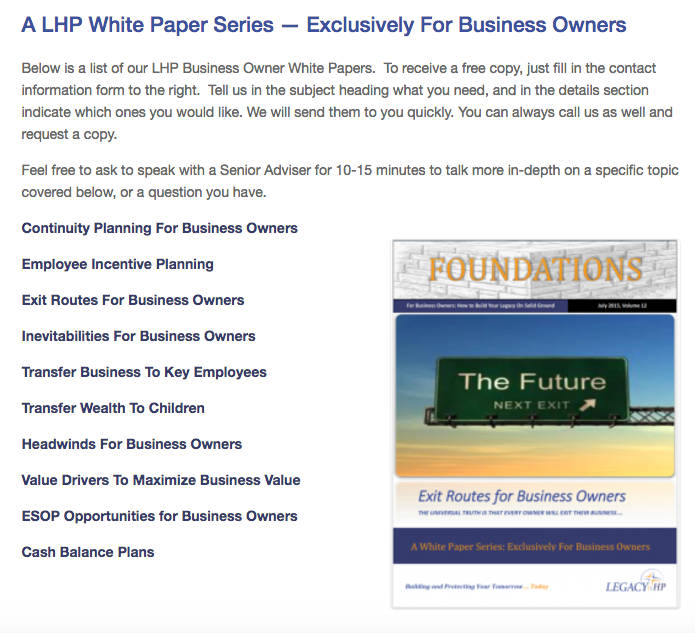There are four characteristics of a successful Employee Incentive Plan. Namely, such plans should:
- Be specific, not arbitrary, and be in writing;
- Be tied to performance standards;
- Make substantial bonuses; and
- Handcuff the key employee to the business.
In this issue we focus on the last characteristic; handcuffing the key employees to the business. The goal of the handcuff is to keep the employee with the company the day after and even years after the bonus is awarded. To help achieve this goal, owners and their advisors typically incorporate several techniques into a stock purchase or non-qualified deferred compensation plan.
Vesting Schedule
First, a vesting schedule handcuffs employees to the company for a time period necessary to become entitled to the bonus awarded. I prefer a continual or rolling vesting schedule in which a single vesting schedule is applied separately to each year's contribution. Using this schedule, an employee is handcuffed to the company for a long period of time because the key employee is never fully vested in the most recent contribution.
Let's assume that a lump sum award is assigned to an employee: one-half of which is given immediately and the other half subject to a five-year vesting schedule. Only in the final year is the employee fully vested in the award earned in the first year. Should the employee leave the company prior to that time, he is only entitled to a percentage of the total award amount. Your key employees are thus "handcuffed" to your business because they receive the full award only by staying with your business.
Further, the longer they stay, the more they receive.
- Each year they stay, a new award is made
- Each year, additional vesting is attributed to the prior four or five years' deferred account
- Each year the entire deferred amount grows in value as interest is credited to each key employee's deferred account
Vesting truly handcuffs key people — financially — to your business.
Forfeiture Provisions and Payment Schedules
Another technique owners use to motivate an employee to stay with the company is forfeiture. A forfeiture provision can be used to reclaim some or all of an employee's vested benefits if he leaves your business and violates his employment agreement. This is an added incentive for your employee to honor any covenant not to compete or trade secret provision contained in his employment agreement.
Owners use payment schedules to determine when payments of vested amounts commence and how long they are to be continued after an employee leaves. When payment schedules are combined with forfeiture considerations, they can prevent recently departed employees from using funds from the deferred compensation plan to compete with the former employer.
Funding Devices
Handcuffing your key employees to your company cannot be effective unless the money to pay the deferred bonus is available when needed. Your key employees must be confident that funding is in place to cover the deferred award. For that reason, owners should seek experienced investment and tax advice. The choice of funding vehicles can influence the timing and amount of income taxes at the company level.
Check with your advisors to see how these handcuffing techniques can become part of the design of your employee incentive plan. Remember, a successful bonus plan for your employees ultimately bodes well for the success of your own Exit Plan.
Take care and have a good day,
Michael
ABOUT LEGACYHP: Our passion is our mission -- To position our clients into a positive, energized, posture -- within your businesses and within your lives -- So that you manage change confidently, take decisive action, and enjoy life's journey Today... while you enjoy building your Legacy for Tomorrow.
Notice: The information contained in this article is general in nature and is not legal, tax or financial advice. For information regarding your particular situation, contact an attorney or a tax or financial advisor. The information in this newsletter is provided with the understanding that it does not render legal, accounting, tax or financial advice. In specific cases, clients should consult their legal, accounting, tax or financial advisor. This article is not intended to give advice or to represent our firm as being qualified to give advice in all areas of professional services. Exit Planning is a discipline that typically requires the collaboration of multiple professional advisors. To the extent that our firm does not have the expertise required on a particular matter, we will always work closely with you to help you gain access to the resources and professional advice that you need.



